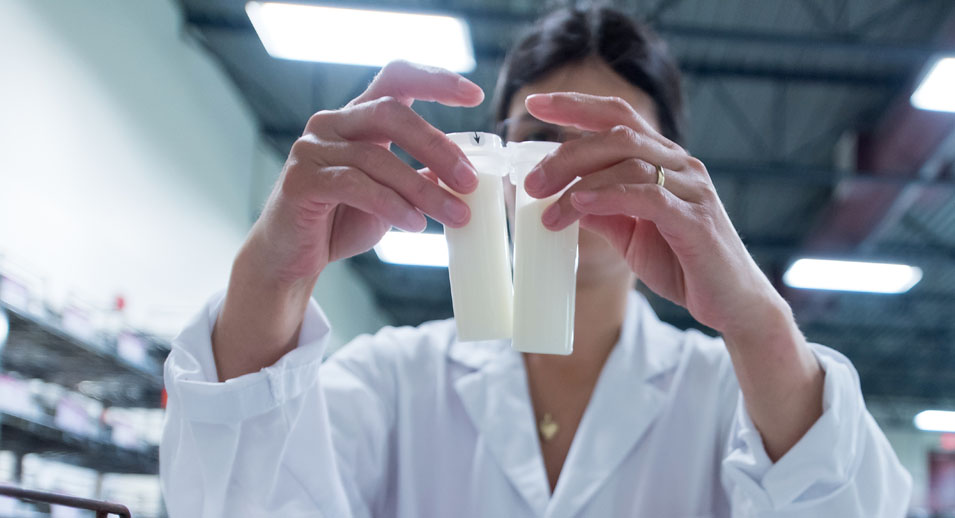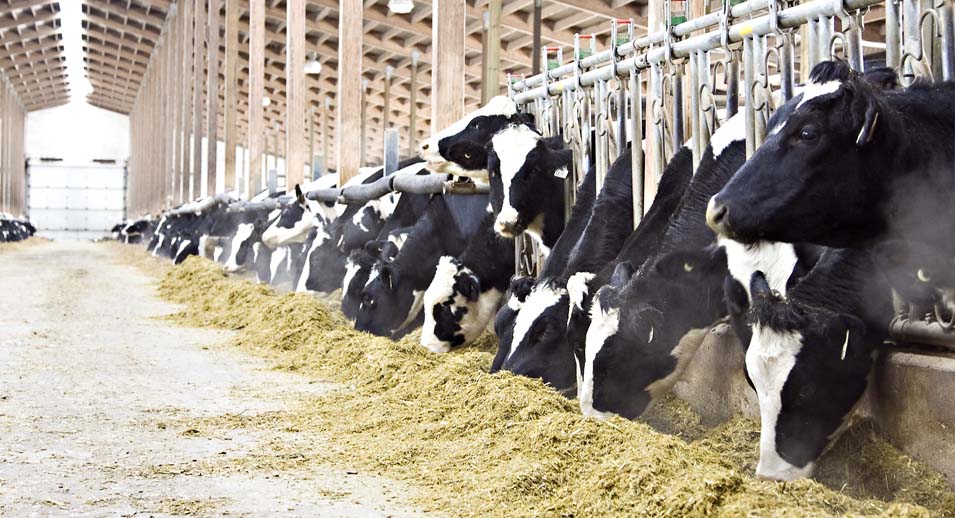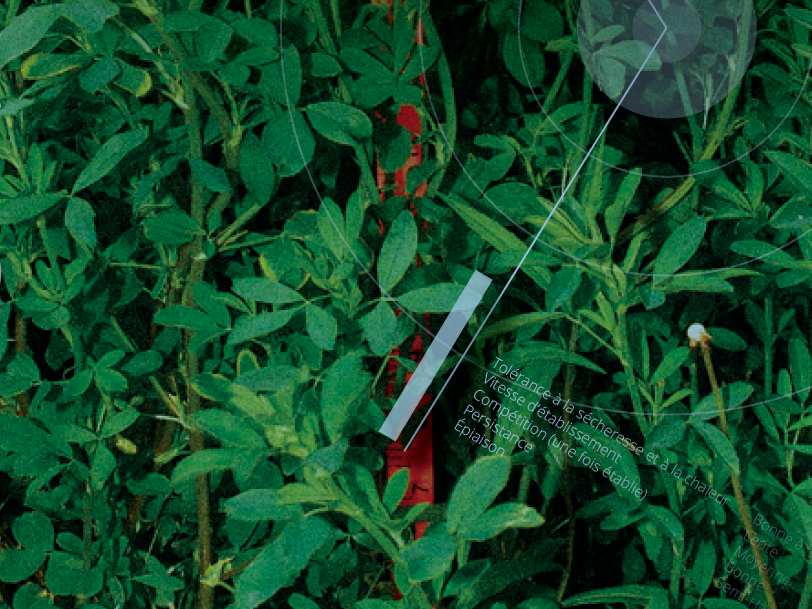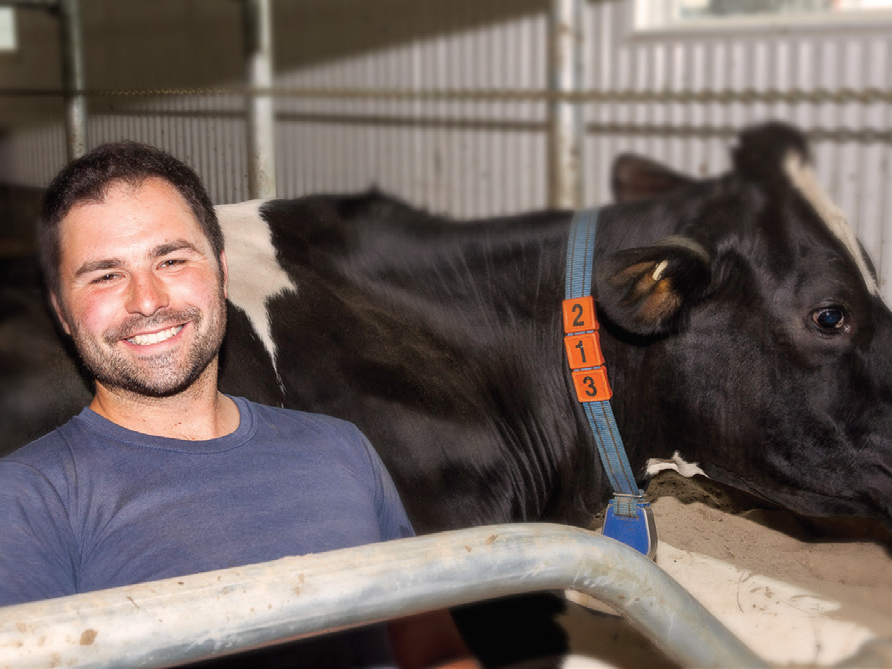Top-quality silage with oxygen-limiting silos
- August 18, 2019
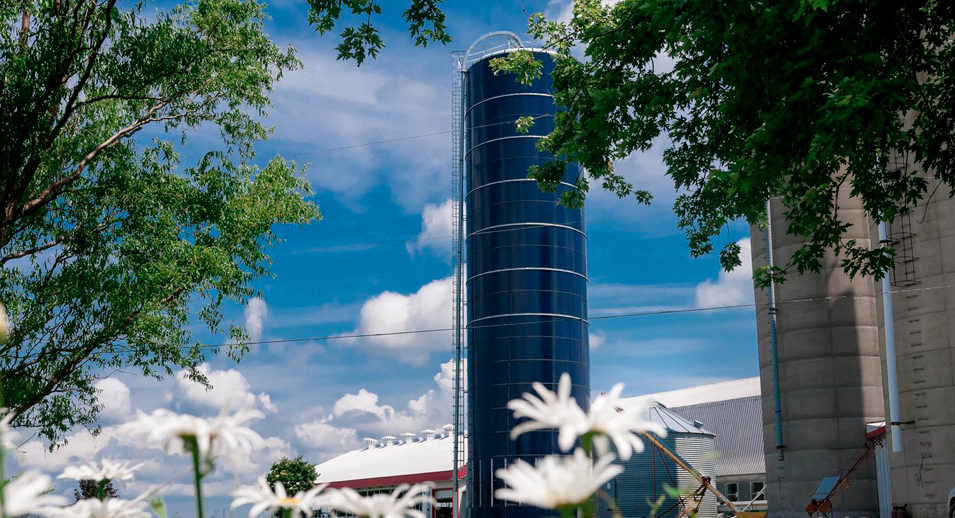
Dry matter content at harvest
Grasses and corn can be ensiled at higher DM contents in oxygen-limiting silos because glass-coated steel silos offer greater compaction and an airtight environment. The table below presents optimal moisture contents and cut lengths for various types of silage.
Table 1. Moisture (%) and theoretical length of cut for different silages (Adapted from Harvestore)
| Silage Type | Moisture (%) | Theoretical length of cut (in.) |
| Alfalfa | 40-45 | 3/8 |
| Clover | 40-45 | 3/8 |
| Cereal | 40-45 | 3/8 |
| Sudan grass | 40-45 | 3/8 |
| Corn | 40-60 | 3/8 to 1/2 |
| Sorghum | 40-55 | 3/8 to 1/2 |
Using dry ice after harvest
Unlike conventional tower silos, oxygen-limiting structures are not designed for the harvested silage to be covered in plastic to reduce DM losses when the silo is not completely filled. The solution in this case is to blow dry ice into the silo to create a layer of CO2 that will prevent the silage from coming into contact with the oxygen in the unfilled part of the silo. This approach is recommended when the silo is filled to less than 80-per-cent capacity. Because CO2 is heavier than air, the dry ice forms a cloud as it melts, separating the feed from the oxygen. Think of it as a mathematical formula: no oxygen = no yeast = no mold = no moldy crust on the exposed surface of the silage!
The steps are as follows:
- Order the CO2 from a gas supplier, such as Praxair (Figure 1), 24 hours before the end of the harvest. Depending on the diameter of the silo, the thickness of the layer of CO2 should ideally be equivalent to the height of one silo ring (4 ft. 6 in.). Table 2 shows the quantity of dry ice required to fill one silo ring.
- After adding the last load of silage to the silo, the dry ice is deposited directly from the top. Practically speaking, it is possible to use a blower to introduce the dry ice (Figure 2), but because some will be lost, more dry ice than the quantity recommended above will need to be ordered. Caution! Gloves and safety goggles must always be worn when handling dry ice.
- It is important to close the silo door after adding the dry ice (see Figure 3).
Figure 1. Box containing dry ice
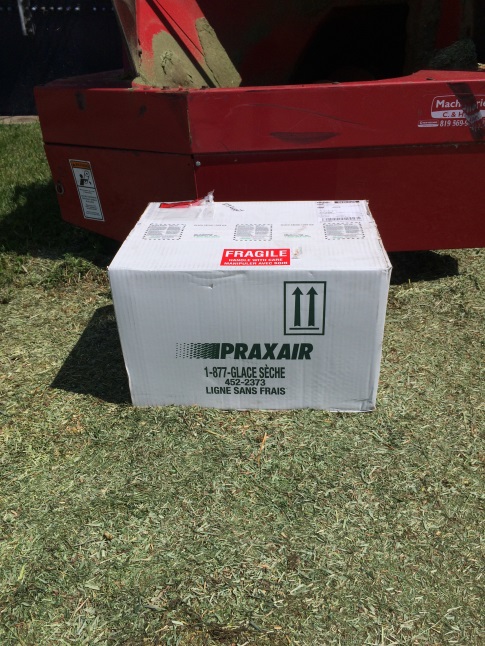
Photo credit: Robert Berthiaume
Table 2. Quantity of dry ice or CO2 (lbs) required to fill one silo ring for different silo diameters (Adapted from Harvestore)
| Silo diameter (ft.) | Volume of one ring (sq. ft.) | Dry ice or CO2 (lbs) |
| 14 | 705 | 80 |
| 17 | 1015 | 115 |
| 20 | 1380 | 157 |
| 25 | 2280 | 259 |
| 31 (high moisture corn only) | 3438 | 390 |
Figure 2. Using a blower to add dry ice to the silo after the last load of silage
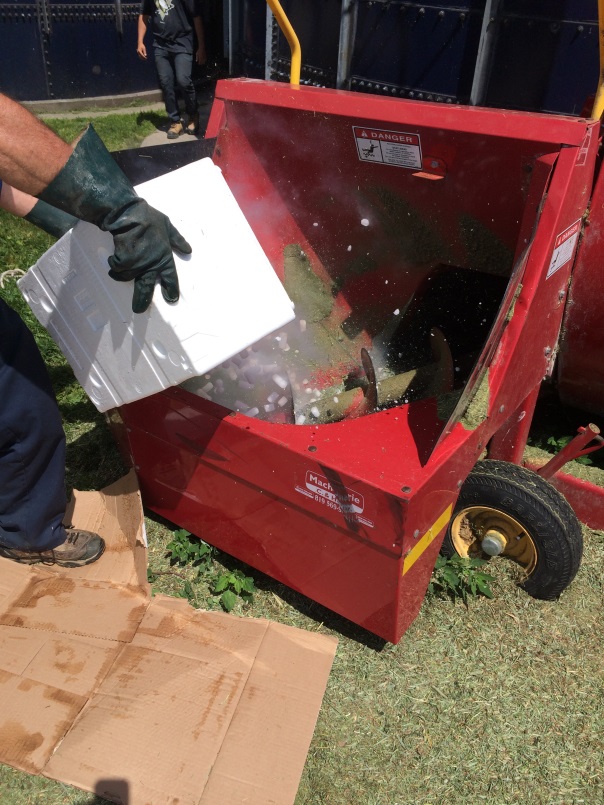
Photo credit: Robert Berthiaume
Figure 3. Overhead view of the silo while dry ice is being added
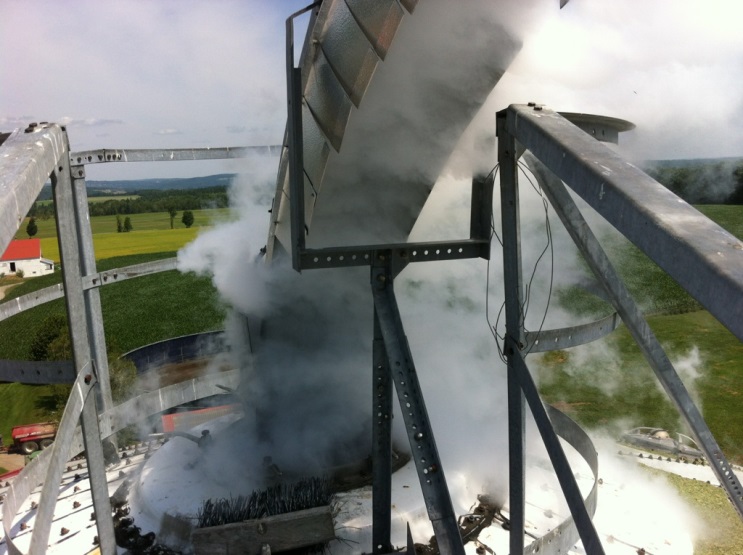
Photo credit: Robert Berthiaume
At feed-out
Oxygen enters the silo each time silage is fed out, and this can lead to a deterioration of the quality of the remaining silage, particularly during the hot summer months. The way to circumvent the problem is to inject CO2 from gas cylinders.
The steps are as follows:
- All glass-coated steel oxygen-limiting silos are equipped with a valve through which CO2 can be injected (see Figure 4) into the hollow created in the silage at the bottom of the silo.
- When injecting CO2, it is very important to take into account the pressure variations that occur in the silo. There is no point in trying to inject CO2 during a sunny day because it is under those conditions that gases expand, which means the breather bags deflate to let these gases escape (Figure 5). The best time to inject CO2 is at the end of a sunny day when the breather bags are inflated, which leaves room to inject the gas.
- It is recommended that CO2 be injected once the silage has begun to heat, so as to replace the oxygen contained in the silo. The gas should be injected gradually during the night, using an injector such as the one shown in Figure 6. A gas cylinder contains 75 pounds of CO2, which is equivalent to 660 cu. ft. of CO2 (at standard atmospheric pressure and 21ºC). It is recommended that enough CO2 be injected to fill two silo rings (refer to chart for exact volume).
Figure 4. Valve used to inject CO2 into the silo
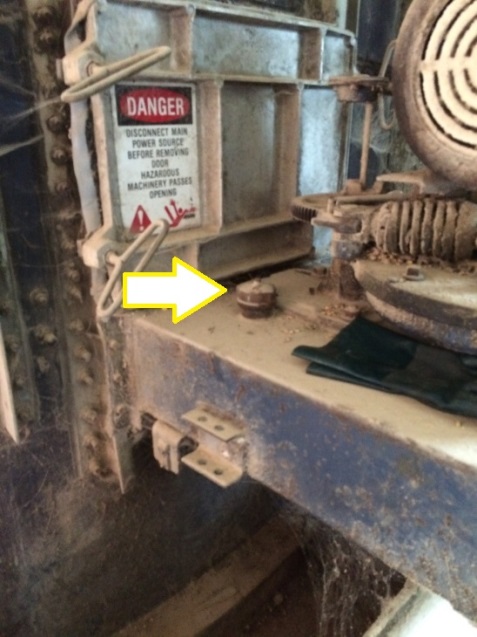
Photo credit: Robert Berthiaume
Figure 5. Breather bags control the pressure inside an oxygen-limiting silo
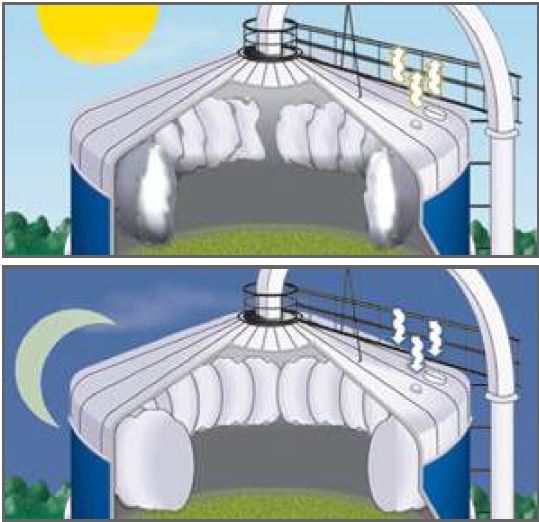
Figure 6. Tubing and adapter used to inject CO2 into the silo
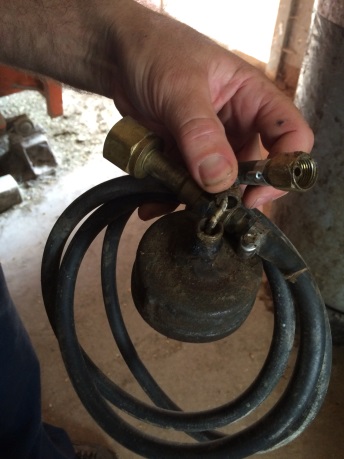
Photo credit: Robert Berthiaume
Points to remember
Every silage storage method has its advantages and disadvantages. The important thing is to use the practices appropriate for the chosen method so as to obtain good quality silage and maximize the investment. It is also essential to follow appropriate farm safety measures to avoid falling or inhaling toxic gases.
For more information on silages, consult Lactanet’s Guide sur l’interprétation des analyses d’ensilages (in French only).



